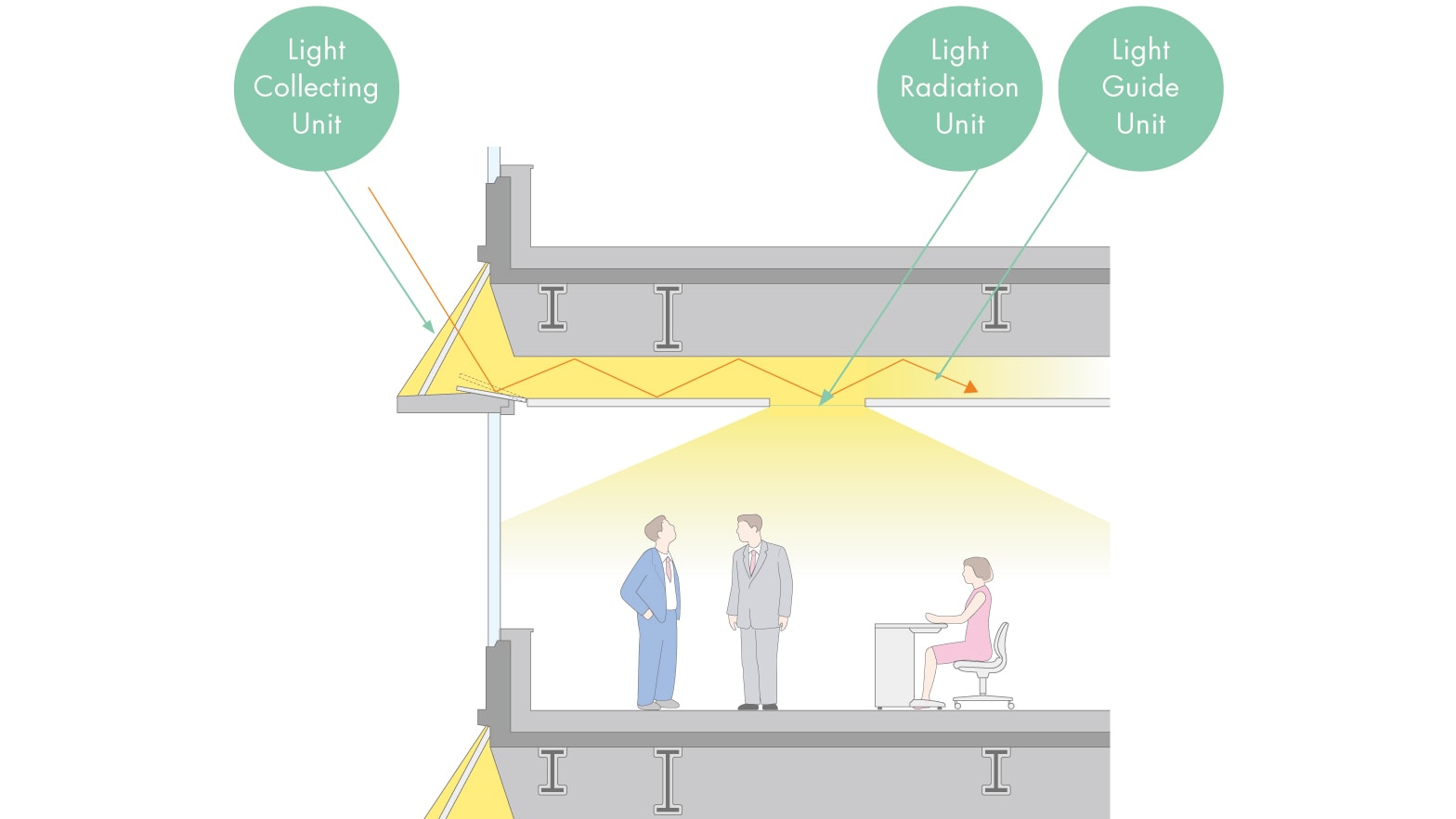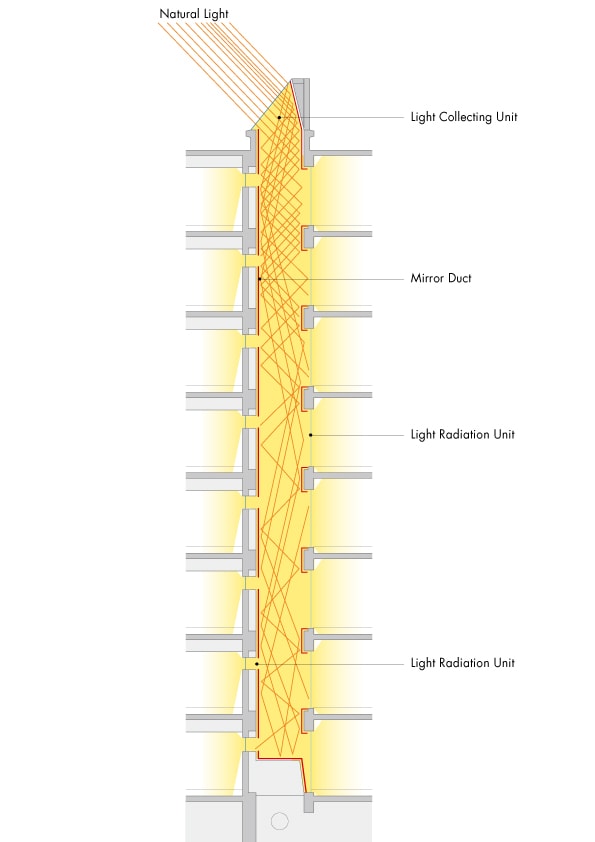Incorporating Natural Light into Windowless Rooms by Introducing a Mirror Duct System
Scroll Down
Natural light not only gives peace of mind, psychologically, but is also well known to have beneficial effects on health. Incorporating natural light into buildings is something that has been done since ancient times. Even now, many buildings have openings that bring in light, which is useful to human life. However, in rooms where openings cannot be provided or places where light cannot reach, artificial light, such as fluorescent light and light-emitting diodes (LEDs), is being used instead of natural light.
Nikken Sekkei is developing a method for incorporating natural light into the depths of buildings and other places where light usually does not enter. Known as the Mirror Duct System, this method brightens room interiors by bringing light in through ducts, as the name indicates. The various other advantages of this system, in addition to brightening room interiors, are attracting attention.
The Mirror Duct System overturns the common-sense approach of introducing brightness from around windows. Cases in which this technique and technology have been used are presented herein.
CATEGORY
The Mirror Duct System Explained

The Value of the Mirror Duct System
Where the Advantages of the Mirror Duct System Can be Expected
